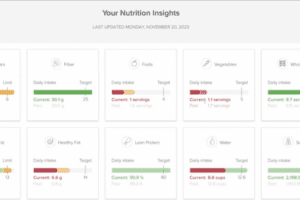The following is a guest article by Sheetal Chawla, Head of Life Sciences and Head of Northeast Region at Capgemini Americas, and Stephen Obana, Vice President of Life Sciences at Capgemini Americas
The healthcare sector has long been globally recognized as one of the leading carbon-intensive industries, accounting for 4.5% of the world’s greenhouse gases. However, the increasing attention on reducing emissions and forging a path to net zero in recent years has many leaders questioning how they can implement new sustainability strategies across their organizations.
In fact, in 2021, the World Health Organization organized a coalition of 42 countries to reduce emissions across their health systems. While this shows the start of action, there is still a long way to go.
When considering why sustainability is such a challenge for the healthcare industry – as well as several others – there are many possible answers. Challenges around emissions measurement have long hindered sustainability efforts, but what if the true barrier lies in the cultural mindset of the healthcare workforce?
Understanding Scope Emissions
In order to tackle sustainability, leaders must understand the full depth of their impact. This begins with understanding the different types of emissions – namely Scope 1, Scope 2, and Scope 3.
- Scope 1 greenhouse gas emissions are directly released into the atmosphere from owned or controlled sources. Examples include producing electricity by burning coal or gases leaking from refrigeration units.
- Scope 2 greenhouse gas emissions result from the indirect consumption of an energy product. Examples include the use of electricity produced by the burning of coal in a different facility or purchasing natural gas from a local power utility to power a building.
- Scope 3 greenhouse gas emissions are indirect emissions (separate from Scope 2 emissions) that are generated in the wider economy. They do not result from the actions of an entity, but rather from sources not owned or controlled by the entity in question. Examples include the transportation of purchased fuels or emissions associated with contracted solid waste disposal and wastewater management.
The sustainability initiatives often put in place by enterprises address Scope 1 and Scope 2 emissions, but rarely Scope 3—despite the fact that Scope 3 emissions have the largest impact on our ecosystem. This is because Scope 3 emissions are difficult to measure and require significant collaboration between organizations in order to enact meaningful change.
Because of those challenges, tackling Scope 3 emissions is not as common; however, a handful of leading healthcare organizations have begun to include roadmaps in their sustainability commitments. In the healthcare sector, the foundational question of sustainability is broken into two parts: how can organizations modernize their current efforts to reduce Scope 1 and Scope 2 emissions, and how can they use this as a foundation for the future of tackling Scope 3 emissions?
The answer might just be all about mindset.
Shifting the Cultural Mindset
When evaluating sustainability roadmaps, the main challenge associated with Scope 3 is measurement. That is, lacking the proper standards and tools to accurately measure the impact of these emissions. But what if the issue with Scope 3 emissions is not about measurement at all – but about changing mindsets?
Across industries, the idea of culture versus data is prominent but rarely talked about. When considering what came first, the chicken or the egg, were Scope 1 and Scope 2 emissions easier to measure, or were they simply the areas given the most focus from the onset?
The real goal of healthcare leadership should be to move towards a culture of importance. Evaluating how to make Scope 3 emissions top of mind for the entire industry – to push through this tough transition period towards sustainability – can be the driving force that encourages more conscious green decision-making.
So where does this transformation begin? Leaders looking to make a genuine impact must start by realizing that sustainability is a topic of cultural improvement at the C-level, and it must be a top-down initiative. Effective leaders should challenge their employees to consider what they have done lately to lead a more sustainable life. This involves leading by example and providing concrete proof points of actions they as leaders have taken in their day-to-day lives. By appealing to the ethos, CEOs and their broader leadership teams can help their workforce understand why they are living greener lives.
By shifting sustainability from a KPI or gold star for the organization, leaders can transform green initiatives from a goal to a way of life. As a result, not only will leaders influence outcomes and profitability for the broader healthcare industry, but those in their organization will feel as though they can make a difference toward the greater good.
Joining the Mission of Healthcare and Sustainability
Consider a young patient suffering from Chronic Obstructive Pulmonary Disease (COPD) in New Delhi, one of the top five most polluted cities globally. Even if this young patient had access to the best physicians and medicine that healthcare has to offer, the amount of pollution and strikingly poor air quality levels would prevent true healing.
This example showcases how intertwined healthcare and sustainability truly are. The mission of healthcare – at a high level – is to treat patients and ultimately save lives, whereas the goal of sustainability is to improve the quality of life for current and future generations.
These agendas are one and the same – to help humans live healthier lives. Whether discussing a pharmaceutical company, a medical device developer, or any sector within healthcare, providers can better deliver to their patients if global sustainability improves.
Healthcare leaders are in a unique position to help drive sustainability. The ongoing push towards a greener future has many decision-makers across the private and public sectors seeking innovative ways to reduce emissions. While understanding scope emissions is one crucial part of the equation, change cannot be realized without shifting the mindset of each and every member of society. Only once sustainability is viewed as the ‘new normal’ and not a corporate benchmark can the tides begin to turn.
 About Sheetal Chawla
About Sheetal Chawla
Sheetal Chawla is the Head of Life Sciences and the Head of the Northeast Region for Capgemini Americas. She is a member of the Capgemini Executive Committee providing overall senior leadership for the firm. Sheetal has a track record of 20 years spanning management consulting, executive business management, and pharmaceutical industry experience. She has built high-performing teams and led several industry-shaping business transformations balancing operational efficiency and top-line growth through near and long-term innovation.
 About Steve Obana
About Steve Obana
Steve Obana is a Vice President of Life Sciences at Capgemini Americas. He is an executive leader focused on bringing innovative products and services to market, leading, managing, and transforming organizations, and successfully growing and improving the profitability of businesses through effective digital innovation and transformation. Steve is based in San Francisco.













